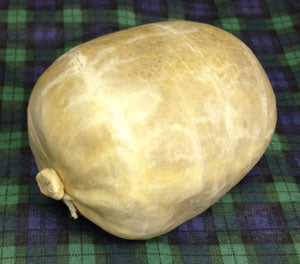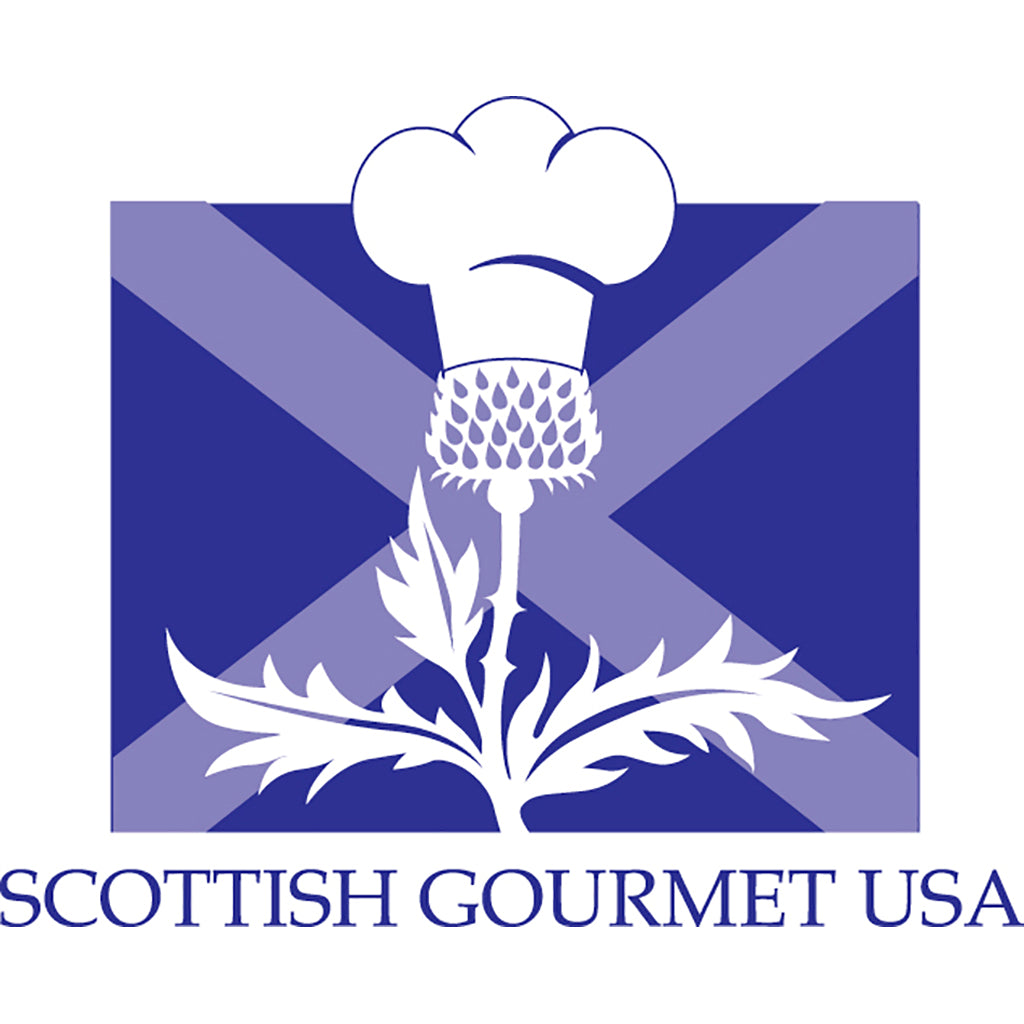
Haggis is the national dish of Scotland. It's made with lamb, oats, onions, and spices.
What REALLY is haggis? Great question! And one that will yield a lot of digressions and different answers. Dozens, really. Haggis is the national dish of Scotland, of course. It's as emblematic of Scottishness as bagpipes, the Loch Ness monster, tartan kilts, IrnBru, thistles and single malt whisky. But what IS it? Ok. Haggis is something like a sausage (meaty stuff in an organ-lining casing). It's traditionally made with lamb "pluck" (lung, liver, heart and esophagus), oats, onions and lots of spices to jazz up the offal. You'll sometimes see haggis referred to as a "pudding," but that's an all-purpose term in Great Britain for food that is sort of lumped together. (The question "What do Brits mean when they say 'pudding'? is a whole other digression. Is it sweet or savory? Is it baked or boiled? Maybe! We'll see if we can address that down the line.)
Haggis is, alas, also sometimes the butt of jokes about, um, unappetizing foods. What with the whole "pluck" and "pudding" conundrum and the added culinary thrill of esophagus thrown into the mix, one can see how haggis has developed what you might call a public-relations problem. In typical pop-culture fashion, many Americans probably first came across their first reference to haggis in the context of the Simpsons, the cartoon-family sit-com about bumbling dads, worried moms, distracted boys, neglected middle children, and the general sloppy state of suburban life. One of the many iconic characters on that long-running show is the red-haired Groundskeeper Willie, a grumpy, kilt-wearing bagpipes-loving Scotsman who's rolled up in as many offensive stereotypes as the show's depiction of Southeast Asian convenience-store owner Apu, or bone-headed donut-munching Police Chief Wiggum. (The show's creators are evenhanded in their efforts to outrage nearly everyone.) Willie has been known to sell haggis at school fairs and other community events. The joke - evidently - is that, unlike funnel cakes or hot dogs, haggis isn't something your average fair-food-eating American would gobble up.
Now, at Scottish Gourmet USA, we know that haggis is very popular. It's one of our top-selling products, and we've started producing things like haggis pies, Balmoral chicken (stuffed with haggis and wrapped in bacon!), haggis pastry puffs and other treats to entice the haggis-curious. (In the United States, the making and selling of traditional-style haggis is essentially prohibited by law, because of FDA restrictions on the use of lung in foods. Our haggis is made with ground lamb and beef liver to achieve the organ-meat flavor and the perfect crumbly but not too dry texture.)
But what does haggis taste like? Well, that depends on how it's made. In Scotland, different butchers and chefs make haggis with regional variations, with assertive levels of spice and onion from place to place. The same would be true if you were to go from butcher shops in New York City, Chicago, Austin and San Francisco sampling different local sausages, or with bakeries and bread. Some people compare the taste of haggis to pate, or to a deconstructed lamb burger. We have regular customers who make tacos, ravioli, meatballs, soup, or Middle Eastern-style flatbread with leftover haggis.
Many of us eat sausages that are made of non-prime cuts and pieces of meat - maybe even scraps! - and we don't trouble ourselves much over it. (Do YOU know what was in that hot dog you had at the ball park?) American barbecue is famously a style of cuisine that took the least desirable pieces of a pig (the opposite of "high on the hog") and turned it into a culinary calling card of the South. The poor and under-privileged often have a knack for taking humble ingredients and transforming them into something that the wealthy tastemakers want to embrace. Lobster used to be something that people were not proud to eat. Haggis is very much a case of that paradigm.
What started as a pragmatic and creative way for farmers and agricultural workers to nourish themselves has evolved into a signature dish of every high-end restaurant in Glasgow and Edinburgh. Scottish pride has helped to elevate the status of haggis around the world. Haggis is to Scotland what poutine is to Quebec.
The New Yorker ran a story on its website a few years back, about the growing popularity of haggis in America and the chefs helping to promote it. The story also featured Scottish Gourmet USA, and you can read it here.
